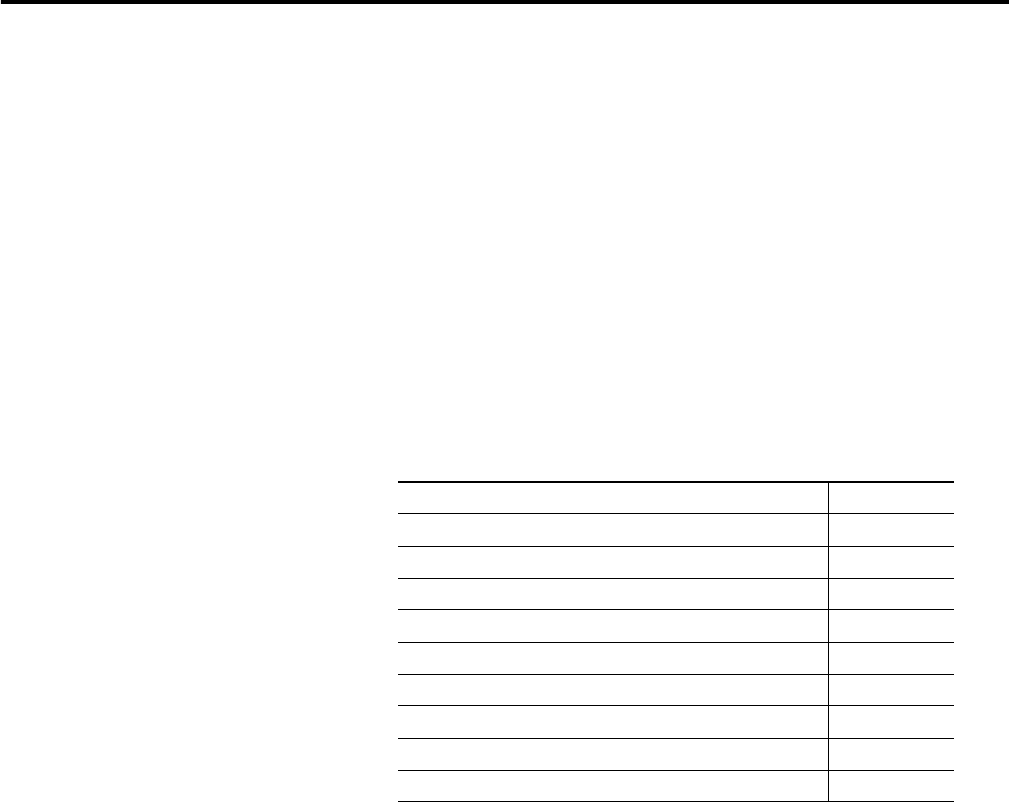Owner manual
Table Of Contents
- 1794-UM066A-EN-P FLEX I/O Dual Port EtherNet/IP Adapter Modules User Manual
- Important User Information
- Preface
- Table of Contents
- 1 - Overview of FLEX I/O and Your Redundant EtherNet/IP Adapter Module
- Overview
- The FLEX I/O System
- Adapter Features
- Types of Adapters
- Hardware and Software Compatibility
- What the Adapter Does
- Use of the Control and Information Protocol (CIP)
- Understanding the Producer/Consumer Model
- Specifying the Requested Packet Interval (RPI)
- Support of Rack Optimized and Direct Connections
- Chapter Summary
- 2 - Install Your FLEX I/O Adapter
- 3 - Configure the Adapter for Your EtherNet/IP Network
- 4 - Rack Optimized Discrete I/O
- 5 - Analog I/O with Direct Connection
- A - Interpret Status Indicators
- B - Specifications
- C - Configure the RSLinx Ethernet Communication Driver
- D - Adapter Web Dialogs
- Index
- Back Cover

37 Publication 1794-UM066A-EN-P - February 2012
Chapter
5
Analog I/O with Direct Connection
Overview
In this example you add analog input and output modules to the FLEX I/O
configured with two digital I/O modules in the previous chapter. Analog
modules default to direct connection, so you will open a direct connection to
each analog module while still using a single rack optimized connection for the
two digital I/O modules.
To test the system, the example of the previous chapter is modified to send a
signal to one of the analog output channels and read the signal back in through
one of the analog input channels.
Set Up the Hardware
Change the system hardware setup of the previous chapter to that shown below,
adding the FLEX analog input and output modules to the DIN rail with the
1794-AENTR adapter and digital I/O modules.
Topic Page
Set Up the Hardware 37
Create the Example Application 38
Add the Analog Modules to the I/O Configuration 39
Add the Analog Input Module to the I/O Configuration 39
Add the Analog Output Module to the I/O Configuration 42
Edit the Controller Tags 45
Modify the Ladder Program 47
Download the Program 47
Test the Example Application 48










